Newly reprocessed images of Europa make the icy moon even more interesting
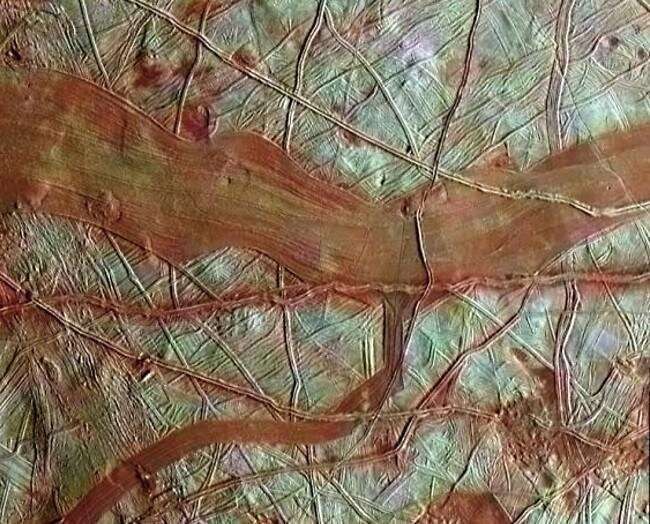
Jupiter's moon Europa is the smoothest object in the Solar System. There are no mountains, very few craters, and no valleys. It's tallest features are isolated massifs up to 500 meters (1640 ft) tall.
But its surface is still of great interest, both visually and from a science perspective. And with a future mission to Europa in the works—possibly with a lander—a detailed knowledge of the surface is essential. It may have surface features called penitentes, that could be up to 15 meters (49 t) tall, posing a serious hazard for any lander.
Our best images of Europa are from NASA's Galileo spacecraft, which visited Jupiter and its moons from December 1995 to September 2003. Now NASA scientists are revisiting some of those image, and reprocessing them to build a better picture of the moon's surface.
Even though Europa is the smoothest object in the Solar System that we know of, it's no landing strip. The surface has a lot of texture, in the form of ridges, bumps, and cracks. Finding a suitable landing spot is challenging, though landing there isn't what these new images are necessarily all about.
NASA/JPL just published a gallery of three re-processed images of different locations on Europa, with a focus on a terrain type called Chaos Terrain.
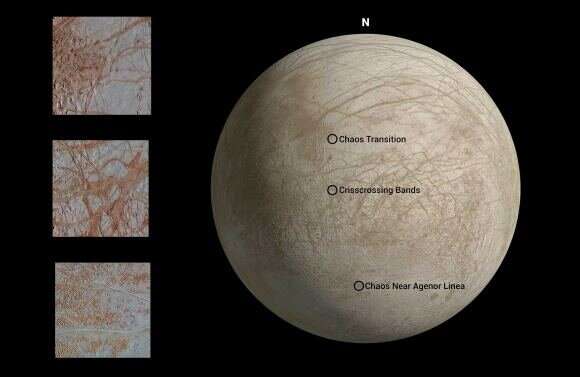
The three new images focus on three locations, all involving Chaos Terrain: Chaos Transition, Crisscrossing Bands, and Chaos Terrain near Agenor Lineae.
"We've only seen a very small part of Europa's surface at this resolution. Europa Clipper will increase that immensely," said planetary geologist Cynthia Phillips of NASA's Jet Propulsion Laboratory, a division of Caltech in Pasadena. As a Europa project staff scientist, she oversees a long-term research project to reanalyze images of the moon.
Galileo captured these images along a line of longitude on Europa in 1998. Only some of them are high-resolution, and they're grey scale images. Those high-res images reveal features as small as small as 460 meters (500 yards) across. But as Phillips pointed out, only a small portion of Europa's surface is imaged in high-res.
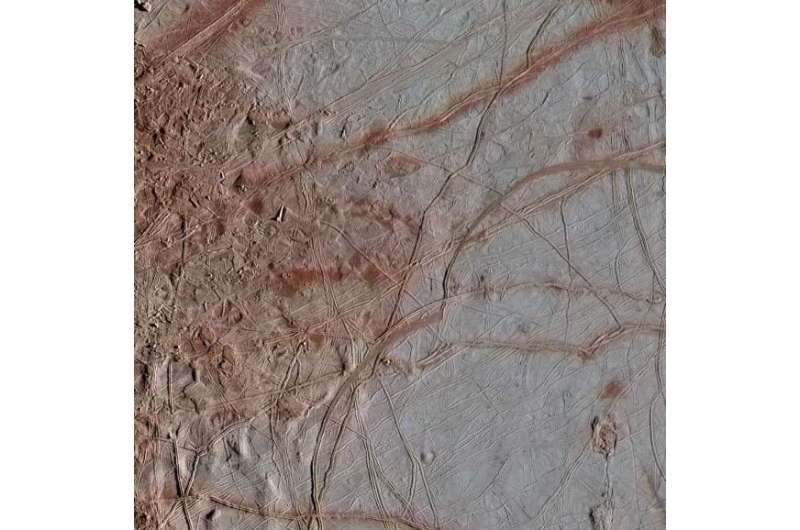
With this re-processing, image technicians used the high-res grey-scale images and combined them with lower-resolution colour images. They painstakingly mapped the colour from the low-res images onto the high-res images. That allows scientists to highlight surface features of different colours.
Europa's surface contains a lot of what's called Chaos Terrain. That's where surface features like plains, ridges, and cracks are all jumbled together, appearing chaotic. The features were moved and jumbled around before they froze in place. Other bodies like Pluto, Mars, and Mercury also have Chaos Terrain.
There's a lot of scientific debate about Europa's surface, and what causes the Chaos Terrain. Impact events where the impactor penetrates the ice surface into a liquid crust is one possibility. Or it might be because of the heating and stretching that Jupiter's gravity forces on Europa, and how the sub-surface oceans respond to that. Scientists think that Europa's lineae are caused by eruptions of warm water, and that lineae are sort of like cracks between tectonic plates.
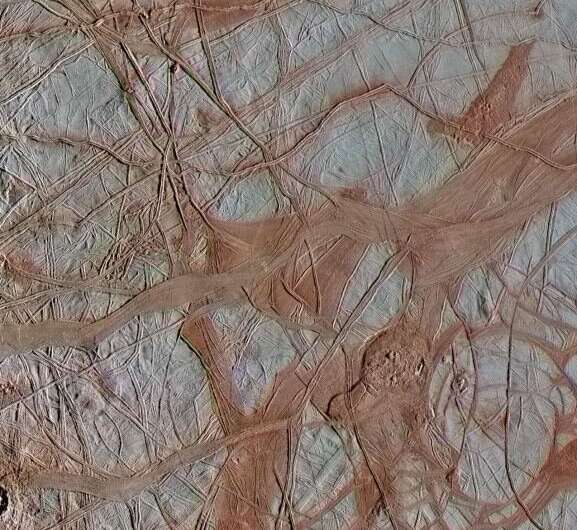
Crisscrossing Bands areas are made up of both ridges and cracks. A ridge is likely the result of repeated opening and closing of cracks. It's kind of like how mountains form on Earth, when two plates push against each other.
A crack is a smoother area, created when an area pulls apart horizontally. These are wide, flat areas, where water might flow into the opening and re-freeze, forming newer smooth surfaces.
These 20-year-old images are proving to be more critical than Galileo mission planners may have thought. With all of the advancements in image processing since the probe was launched in 1989, a new generation of mission planners is able to extract more information from these images.
NASA is planning to send its Europa Clipper spacecraft to Europa sometime in the 2020s. It won't actually land on the moon, but it'll orbit Jupiter, and perform close fly-bys of Europa. These reprocessed images of the Europan surface will help mission planners prepare.
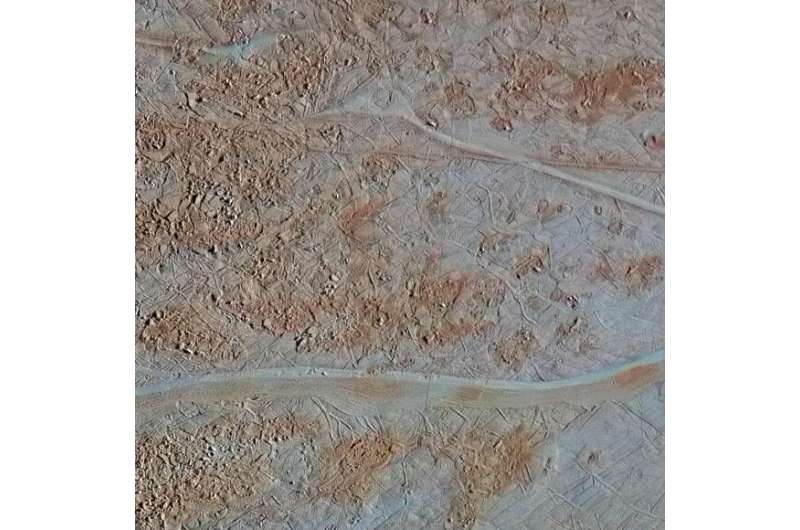
The Europa Clipper isn't the only mission aimed at Europa. Europa is intriguing because of the warm, salty ocean that's likely under the icy surface. Could there be life there? That's the over-arching question that drives the mission.
The European Space Agency is also interested in Europa. Their Jupiter Icy Moons Exploer (JUICE) mission is mostly targeted at Jupiter's moon Ganymede, but will perform two fly-bys of Europa. It'll launch in 2022 and arrive at Jupiter in 2029. It'll spend three years there.
Those missions will advance our understanding of the strange moon, with ice-penetrating radar and other instruments. But what we all really want to see is a lander, maybe even one that could probe through the ice to sample the sub-surface ocean. The most of extravagant of these would see a lander arrive on Europa's surface, then use nuclear power to melt its way into the ocean, where a probe would be released.
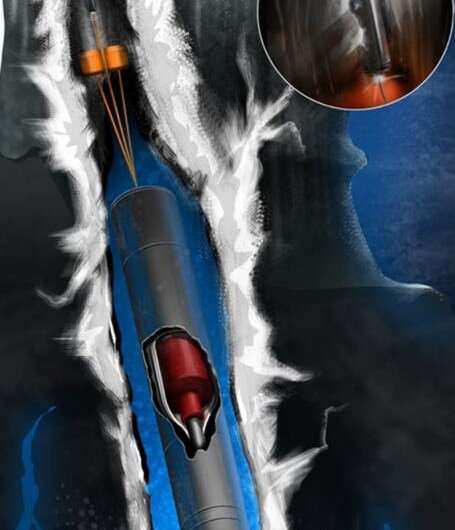
NASA's proposed Europa Lander mission is a concept at this point, with an initial proposed launch date of 2025. It would be a follow-up mission to the Europa Clipper. The Europa Lander mission is aimed at detecting biosignatures on the surface of the moon. While the Lander wouldn't drill through the ice or anything like that, it may not have to. Europa's activity might mean that sub-surface water is regularly deposited on the surface, ready to be sampled.
Even though Europa is billions of years old, its smooth surface is likely very young in geological terms. NASA says that its surface features are an average between 40 million and 90 million years old. That young surface is just one more fascinating characteristic of the icy moon.
Even though we've learned a lot about Europa, it's still a puzzle. We'll probably have to wait a few years before these new missions solve some of that puzzle. In the meantime, we can look at these images and wonder.
Provided by Universe Today





















